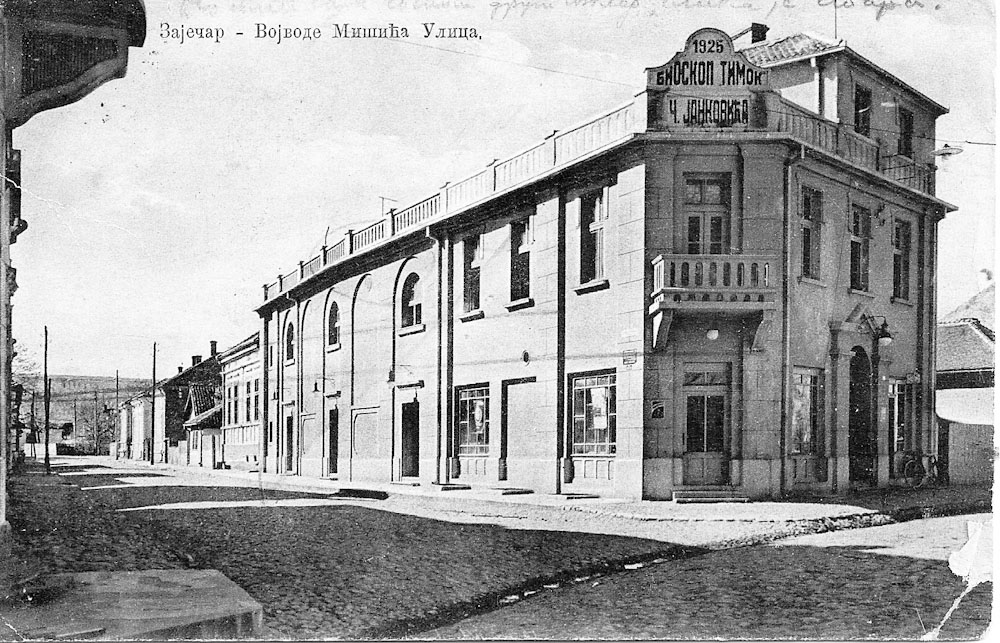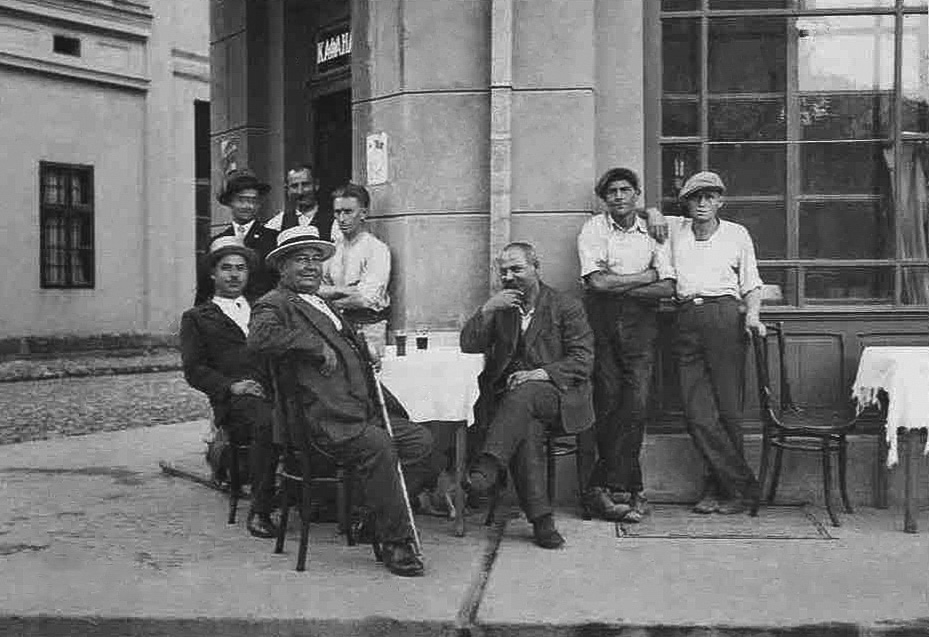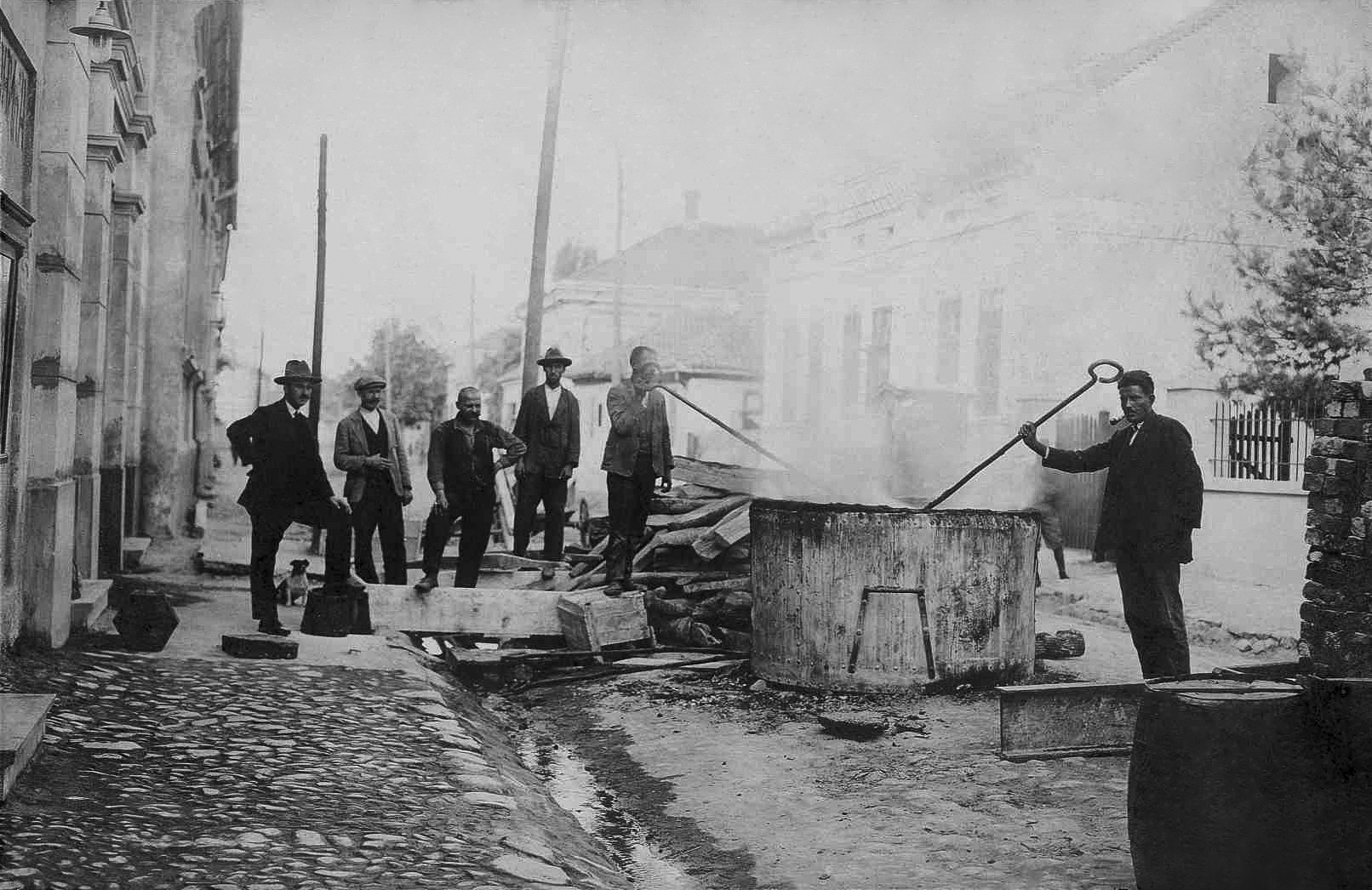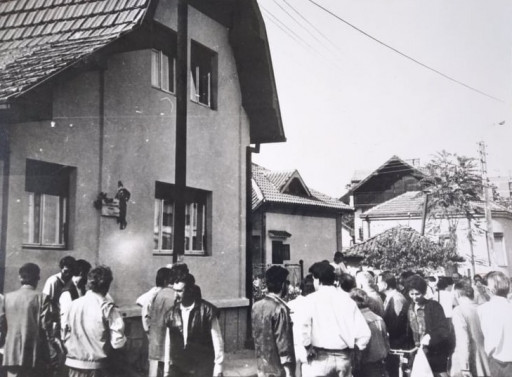
The building begun in 1921 according to the project by the architect Kolar, and was inspired by a Viennese cinema "Astoria".

After the reconstruction in 1926 the cinema hall had 400 seats, with the additional 150 at the roof terrace where guests were served drinks as well.

After the licence from the Ministry of Trade and Industry has been received on August 31st, the City Cinema was officially open.

Čeda Janković financed the digging of the artesian well next to the cinema and which supplied the houses in the neighborhood with clean drinking water.

Čeda Janković closed the cinema when the World War II begun, but was forced to reopen it on May 3rd threatened with an arrest and taking over of the cinema. He was forced to screen only censored movies.

Čeda Janković was killed by the local chetniks in June, somewhere nearby Boljevac, after refusing to pay a huge ransom. The cinema was taken over by his wife Jelena and their sons.

The cinema becomes state-owned on October 11th, like the rest of Čedomir Janković's property, with the exception of the apartment on the first floor that remained in his family.

The cinema is renamed into The Company for Film Projection.

In 1970s the name of the Company was changed into the Working Organization for Film Projection "Timok" Zaječar, and later into Commonly Owned Company for Film Projection "Timok" Zaječar.

Due to the economic crisis and lack of care in the 1990s, the cinema remained closed most of the time.

The previous company has been transformed into the Common Company for Film Projection "Timok" Zaječar.

A former projectionist Aleksandar Videnović (Aca Tupižnica) reopened the cinema and attempted as a volunteer to revive the old magic of cinema art.

After almost a century, Cinema "Timok" was officially erased from the state register at the end of the year.
There would be no Cinema “Timok” without Čedomir Čeda Janković (1894-1944) known during his lifetime as an electrician, locksmith, salesman, caterer, handler of steam locomotives and detonating machines, film projectionist, and trader of imported agricultural machines, petrol, oil and tires.

Čeda Janković had a great curious mind and was an admirer of the new art of “magic moving images”. In 1920, he visited Vienna where he fell in love with a small cinema Astoria and decided to build a similar one in Zaječar. He purchased the land at the very end of the center of the city with a plan to build a modern cinema and hired the architect engineer Kolar for the task.

The works on the building begun in 1921 and were finished in 1924, when he started to screen silent movies. During 1925, some additional adaptations were made, after which the building got the shape we still see today. It contained a large cinema hall with seats on the ground floor and half-round boxes on two levels, as well as a balcony above them along the whole hall. On the ground floor, there were tables where people could consume drinks during the show. In front of a large screen at the bottom of the hall, a spacious stage was made with a spot for the musicians who accompanied silent movies. The cinema had around 200 seats. At the entrance of the building, a small bar “Laf” was opened towards the street and was used both by the visitors and non-visitors of the cinema.



After the reconstruction in 1926, the cinema hall had 400 seats, with the additional 150 at the roof terrace where guests were served drinks as well. As some sources claimed, the roof of the building actually accommodated two terraces at the beginning, allowing for two different films to be screened simultaneously. At a certain point after the Great War, the old room with a cinemascope was renovated to accommodate the Society of Friends of France and their library and reading room, rented out free of charge. The cinema also had its own electricity generator and started its official work after obtaining the license from the Ministry of Trade and Industry on August 31, 1927 under the name “Gradski bioskop” (“City Cinema”).


In order to attract as many visitors as possible, Čeda Janković printed posters from early days and had also placed a light box as an advertisement in the city. Very soon, the celebrations of New Year’s Eve with a movie and “a dancing party until dawn” became very popular, hosting only up to 263 persons. On Saturdays and Sundays and during morning hours young people organized dance parties for which the cinema provided a double record player, or a record player with two discs, in order to prolong the dancing time. At the extension of the building, one of the newly built shops was given to Mihajlo Marković and his famous photographic studio.

During World War II, the occupying German army forces ordered Janković to reopen the cinema, which he postponed as much as possible. Only after they threatened him with an arrest and taking over of the cinema, he reopened it on May 3rd, 1941, screening only the movies allowed by the occupiers.

During the war, Čeda Janković survived the camp in Niš where the German army took him as a hostage; nevertheless, he did not live through June 1944 when he was murdered by the members of Zaječar chetniks troops near Boljevac, after he refused to pay them a large sum of money. The cinema lost its owner, so his wife and sons took over the management. After the liberation in October 1944, the cinema screened movies received from the Film Section of Serbia, primarily free films from the Soviet Union, as well as the purchased ones from Great Britain and USA, and censored films hidden in bunkers during occupation times. Based on the County legal decision on October 11th, 1945 the cinema became state property, as well as the rest of Čedomir Janković’s assets, except for the apartment on the upper floor that remained in his family.

Since 1945, cinema worked under new circumstances and in 1950 changed name to The Company for Film Projection. An interesting fact is that soon after the Second World War, the ground floor of the storage space next to the cinema was used to host dancing parties and concerts of local jazz bands and schlager music. During 1970s, the cinema’s name was changed to The Working Organization for Film Projection “Timok” Zaječar, and later to Commonly Owned Company for Film Projection “Timok” Zaječar.

The “golden age” of Cinema “Timok” was definitely in the 1970s when three to four shows a day were common, and the film selection satisfied all ages of cinema-goers. During summer nights, the films were shown on the roof terrace, with “rascals” from the neighborhood often watched the movies from the surrounding rooftops. The films were screened just after their Belgrade premieres, and several Serbian films had actually had their opening night in Zaječar.

During the economic crisis in 1990s, due to the lack of care and resources, the cinema remained closed most of the time. The new habit of watching films at home, the expansion of video rentals and pirated movies had had the impact on the reduced interest for cinema, and similar faith happened to this once favorite city cinema. In 2002 the old company was closed down and reopened under the name Common Company for Film Projection “Timok” Zaječar. In 2005 a former projectionist Aleksandar Videnović (Aca Tupižnica) reopened the cinema and attempted to revive as a volunteer the old magic of cinema art. Unfortunately, his attempt did not last long and, after almost a century, Cinema "Timok" was officially erased from the state register at the end of 2010.

JANKOVIĆ'S ČESMA (Drinking Fountain, 1930)
Čeda Janković gave away large parts of his profits for societal needs and supported many charitable, educational etc. institutions and activities. In 1930 he sponsored the digging of an artesian well next to the cinema, opening two pipes to provide drinking water for the houses in the neighborhood.
There is an inscription on the well that reads: “The fountain is the endowment of Marjan Janković’s sons as a gift to their contemporaries, and as an example to future generations. Depth: 188 m. Discovered in September 1930.” The drinking fountain is placed on the external wall of the Cinema "Timok" and in the beginning, the water was pumped into a reservoir on top of the building. The water was further distributed from the reservoir via pipelines to the inhabitants of nearby streets functioning as a “mini city water supply system”. The wasted water was distributed via a small channel to the main city channel nearby.

SOURCES:
Stevan Veljković, Iz starog Zaječara: rodovi i porodice, građevine i radovi. Zaječar, 2002.
Ilija Janković, „Bioskop „Timok“ u Zaječaru (1924-1945).“ Razvitak br.209-210, Zaječar, 2002, str.42-52.
dr Miodrag Velojić, Zaječarske javne česme. Zaječar, 2015.
Ivan Đorđević i dr., Zabavna muzika u Zaječaru. Zaječar, 2007.



Primary school "Đura Jakšić" was founded in 1953 but got its own building in 1960. In the beginning,...

The house in which one of the most important Serbian actors, Zoran Radmilović, grew up is located at...

Technical High School was founded in 1966 and since the beginning was located at the building in whi...

When it was built, Rajković & Stajković Palace was the tallest building in Zaječar. There were two s...